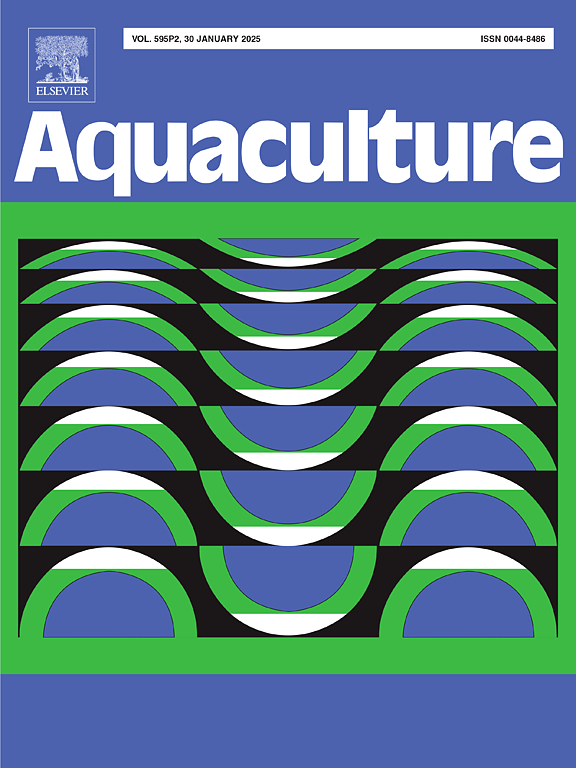A novel infectious hematopoietic necrosis virus (IHNV) isolated from white-spotted charr (Salvelinus leucomaenis) is moderately virulent to rainbow trout (Oncorhynchus mykiss)
IF 3.9
1区 农林科学
Q1 FISHERIES
引用次数: 0
Abstract
J genogroup infectious hematopoietic necrosis virus (IHNV) is mostly isolated from rainbow trout (Oncorhynchus mykiss). In this study, a novel IHNV strain, designated as H202217, was isolated from diseased white-spotted charr (Salvelinus leucomaenis). The phylogenetic analysis showed that the H202217 strain had the closest relationship with other Chinese J genogroup IHNV strains isolated from rainbow trout. In vitro proliferation experiments showed that the H202217 strain had lower titer but similar immunogenicity with the Sn1203 strain, a reference strain isolated from rainbow trout. In the artificial infection of white- spotted charr, the H202217 strain showed low virulence, and caused a cumulative percentage of mortality (CPM) of 15 %, which was higher than the CPM of 7.5 % caused by the Sn1203 strain. While challenged in rainbow trout, the H202217 strain caused moderate CPM of 22 %, lower than that of 46 % caused by the Sn1203 strain. In addition, the viral loads of the H202217 strain were higher than those of Sn1203 strain in white-spotted charr, while it was the opposite in the rainbow trout. These results suggest that the H202217 strain has better fitness with white-spotted charr and lost partial virulence to rainbow trout compared with the rainbow trout sourced IHNV Sn1203 strain, and which has potential use to reveal the IHNV virulence evolution companied with host jump in the future.
从白斑鲑(Salvelinus leucomaenis)中分离出的一种新型传染性造血坏死病毒(IHNV)对虹鳟(Oncorhynchus mykiss)具有中等毒性。
J基因型感染性造血坏死病毒(IHNV)主要分离自虹鳟(Oncorhynchus mykiss)。本研究从白斑炭疽(Salvelinus leucomaenis)中分离到一株新型IHNV,命名为H202217。系统发育分析表明,H202217株与虹鳟中分离的其他中国J基因组IHNV株亲缘关系最密切。体外增殖实验表明,H202217株滴度较低,但免疫原性与虹鳟中分离的参考菌株Sn1203相似。人工感染白斑炭黑时,菌株H202217毒力较低,累计致死率(CPM)为15%,高于菌株Sn1203的7.5%。在虹鳟中攻毒时,H202217菌株的CPM为22%,低于Sn1203菌株的46%。此外,H202217菌株在白斑鲑中的病毒载量高于Sn1203菌株,而在虹鳟鱼中的病毒载量则相反。结果表明,与虹鳟源IHNV Sn1203株相比,H202217株对白斑炭疽具有更好的适应性,对虹鳟鱼丧失了部分毒力,这对揭示未来IHNV毒力随宿主跳变的进化具有潜在的应用价值。
本文章由计算机程序翻译,如有差异,请以英文原文为准。
求助全文
约1分钟内获得全文
求助全文
来源期刊

Aquaculture
农林科学-海洋与淡水生物学
CiteScore
8.60
自引率
17.80%
发文量
1246
审稿时长
56 days
期刊介绍:
Aquaculture is an international journal for the exploration, improvement and management of all freshwater and marine food resources. It publishes novel and innovative research of world-wide interest on farming of aquatic organisms, which includes finfish, mollusks, crustaceans and aquatic plants for human consumption. Research on ornamentals is not a focus of the Journal. Aquaculture only publishes papers with a clear relevance to improving aquaculture practices or a potential application.
 求助内容:
求助内容: 应助结果提醒方式:
应助结果提醒方式:


